An interesting type of sensor for specific applications is the sensor formed by piezoelectric coaxial cables. Sensitive to bending, folding and forces, these sensors can be used in important applications such as alarms, underwater acoustics, sports, etc. See in this article how these sensors work.
Piezoelectric coaxial cables are similar to ordinary coaxial cables, except that the dielectric material separating the inner conductor from the mesh is a material with piezoelectric properties, as shown in Figure 1.
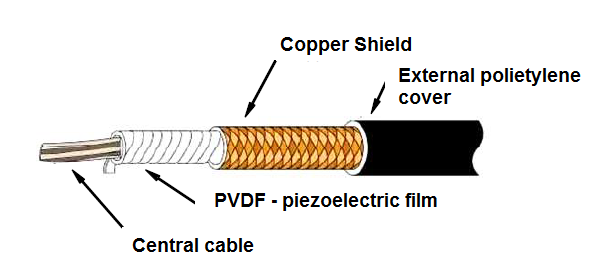
Because the dielectric material is piezoelectric, in this case a film layer, the cable has important properties. When bent, compressed, folded or stretched it generates a tension between the mesh and the central conductor.
The voltage generated is proportional to the stress to which the cable is subjected which allows its use as a sensor for various applications.
This type of construction, in the form of a cable, makes the cable a sensor especially suitable for certain types of application.
For example, because the outer mesh works as shielding, the cable has a great EMI immunity and is therefore suitable for environments where electromagnetic interference is a problem.
The cable shown in Figure 1 is of the AWG type 20 because the inner conductor has this gauge.
As its construction is linear, it can monitor large areas without requiring additional connections because the connection is the sensor itself.
Thus, one of the applications of this type of sensor is in the detection of intruders or in fences. It can also be used as a hitting, vibration and stress sensor. Another application is in underwater acoustics.
We can also cite as an application the monitoring of patients and applications in sports in which it detects the passage through a finish line, for example.
Mouser Electronics has in its product line the cables from Measurement Specialties whose characteristics can be accessed at http://www.mouser.com/ds/2/418/Piezo_Spiral_Wrapped_Coaxial_Cable-736553.pdf
Cables are usually sold in multiples of 1 meter length and can be purchased from Mouser Electronics website at: http://www.mouser.com/Wire-Cable/_/N-5ggl?keyword=piezo
In Figure 2 we have the appearance of these cables.
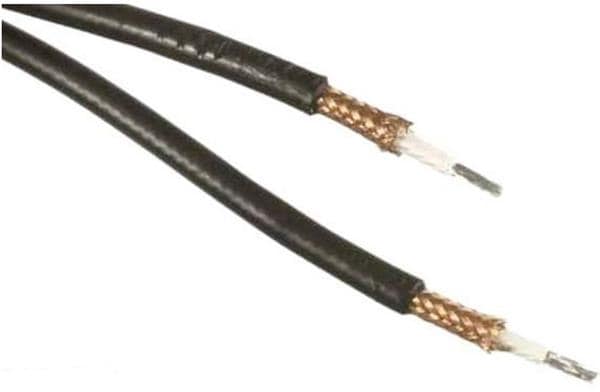
Among the featured features for this cable we have:
- Unlimited length
- Water resistant and flexible
- Stable at temperatures up to 85 ° C
- High Voltage Response
- Low impedance per unit length
- Simplified interconnections
- Repairable in the field
The use of these sensors is simple, requiring circuits with common components.
The simplest configuration makes use of operational amplifiers, as shown in Figure 3.
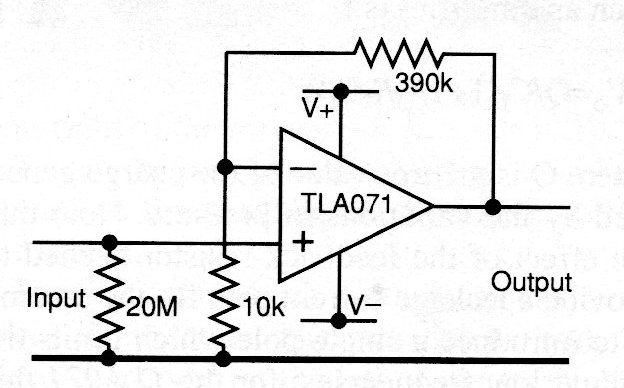
The most recommended configuration is the one which makes use of a low noise amplifier, as shown, where the source is symmetrical with voltage according to the interfacing circuit.
In Figure 4 we have a circuit in which a simple power supply is used, but without the possibility of canceling the offset voltage.
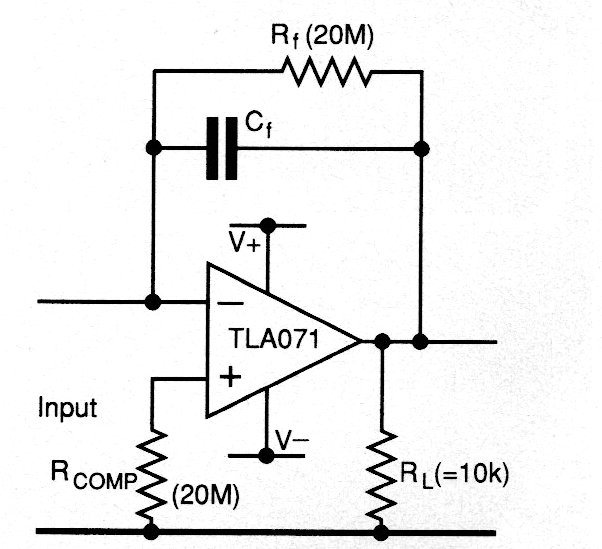
A circuit with transistors is shown in Figure 5.
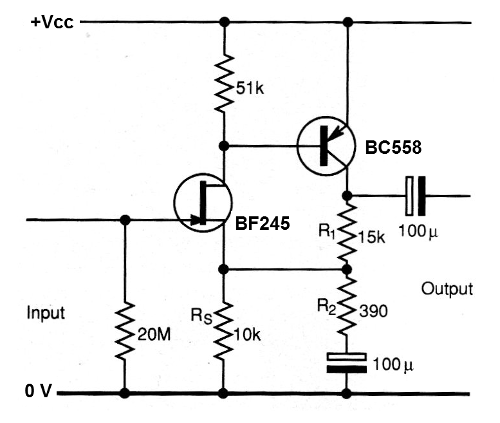
Observe the need to place a resistor at the input of circuits of the order of 20 M ohms to form the path for the bias current.



